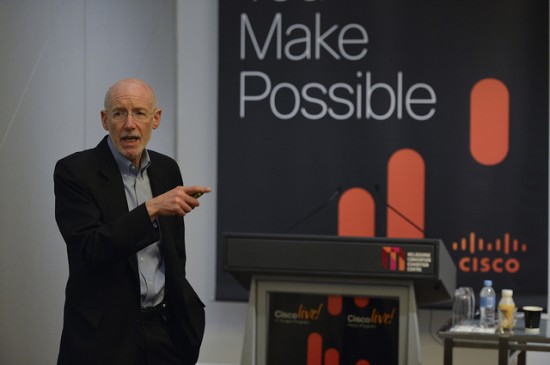Australian mobile data traffic will increase sixfold between 2012 and 2017, reaching 0.075 exabytes. Meanwhile, New Zealand mobile data traffic will increase eightfold in the same period.
These were the key findings from our latest Global Mobile Visual Networking Index (VNI), an ongoing initiative to predict global traffic growth, which were presented last week at Cisco Live in Melbourne by Dr. Robert Pepper, Cisco’s vice president for global technology policy (see slide presentation here).
Dr. Pepper identified four trends driving this data consumption growth: more users, more devices per user, faster network speeds and more media-rich content.
The popularity of the smartphone in ANZ will continue, according to the Index, with the device attaining 51% of the total device market share in Australia and 54% in New Zealand by 2017. Meanwhile, machine-to-machine (M2M) devices over cellular networks will reach about a 28% share in both the Australian and New Zealand markets by 2017.
One of the other main trends identified by the Cisco Global Mobile VNI is the growing traffic offload from mobile networks to fixed networks. By 2017, it’s predicted that 26% of data traffic from mobile devices in Australia will be offloaded to WiFi networks. This reflects a global trend which is being driven by the increasing percentage of smartphones, as mentioned earlier in this post, and the growth of LTE. The Index predicts that 4G will account for 19% of connections and 40% of traffic by 2017 in Australia and 11% of connections and 29% of traffic in New Zealand.
As we look to the next five years in mobile traffic, it’s clear that more users, with each using more bandwidth on more powerful devices, will contribute towards a dramatic increase in traffic in the ANZ region. We’re looking forward to the next iteration of the VNI to see how this fast-paced landscape will have evolved once again.
See more photos from the ANZ Mobile VNI Press Conference with Dr. Pepper at Cisco Live Melbourne here.



Go right now to and find out the tsx today tsx news tsx today dollar globe and mail shaw webmail djia today TSX-Today.com TSX Today http://www.youtube.com/watch?v=H5NHB94KSC
Why YouTube videos are shared everywhere? I think one motive is that these are effortless to obtain embed code and paste that code everyplace you wish for. beats by dr dre on sale http://beatsbydrdreto.co